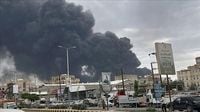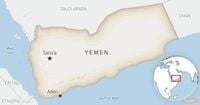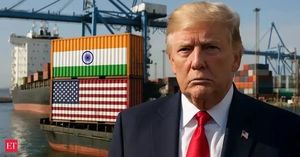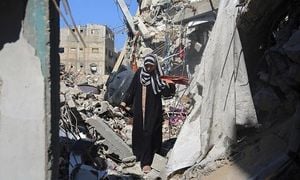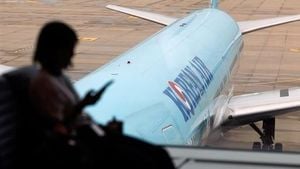Smoke still lingers over Sanaa, the capital of Yemen, after a series of Israeli airstrikes on August 24, 2025, shattered the city’s uneasy calm and left a trail of devastation. The attack, which targeted key infrastructure and alleged military sites controlled by the Houthi rebels, marks a dangerous new escalation in the already volatile Middle Eastern conflict, drawing in regional powers and raising fears of even wider repercussions.
The immediate human cost is stark. Health authorities in the Houthi-controlled capital reported that the death toll from the strikes had risen to 10 by Monday, with at least 102 others wounded. Among the injured were seven children and three women, and 21 victims were listed in critical condition, according to Anees al-Asbahi, a spokesman for the Houthi-run Health Ministry, as cited by Associated Press and The Times of Israel. Fires raged in the aftermath, with civil defense crews scrambling to extinguish blazes at the oil company station and other locations targeted in the city’s south and west.
The Israeli military confirmed the airstrikes, stating that they were a direct response to a missile attack by the Houthis just two days earlier. On August 22, the Iran-backed group launched a hypersonic ballistic missile toward Tel Aviv’s Ben Gurion Airport. Although the missile fragmented mid-air after several interception attempts, shrapnel damaged homes in the area. No fatalities or injuries were reported from the missile strike, but Israeli Prime Minister Benjamin Netanyahu was unequivocal in his televised remarks: “The Houthis are paying a heavy price for [their] aggression.”
The targets in Sanaa were not chosen at random. According to Israeli Defense Minister Israel Katz, the operation involved 14 warplanes dropping approximately 40 bombs on four main sites: the presidential palace complex (which the Israeli military described as a military site), the Asar and Hizaz power plants, and a fuel storage facility owned by Yemen’s main oil company. The Israeli Defense Forces (IDF) argued that these facilities, though civilian in nature, were being used for Houthi military operations. “The Houthis’ use of the plants constitutes further proof of how the Houthi regime uses civilian infrastructure for military purposes,” the IDF said in a statement reported by The Times of Israel.
Local witnesses described scenes of chaos as explosions rocked the city near the presidential palace, a military academy, Sabeen Square, and the oil company station. Videos posted by Houthi-linked TV media showed fireballs lighting up the night sky, while plumes of smoke billowed over Sanaa’s skyline. The strikes also reportedly destroyed several passenger planes at Sanaa International Airport, which had already been knocked out of service by Israeli airstrikes in May 2025, according to Associated Press.
The Houthis, for their part, condemned the attack in the strongest terms, accusing both Israel and the United States of “brutal aggression” and a “heinous crime” against civilian facilities. In a statement, the group vowed retaliation, holding the two countries responsible for the rising civilian toll. “Military operations supporting Gaza won’t stop, God willing, unless the aggression is stopped and the siege is lifted,” said Nasruddin Amer, deputy chief of the Houthi media office, in a post on social media cited by Epoch Times.
This latest exchange is the culmination of a months-long cycle of violence that has drawn Yemen further into the regional conflict. Since November 2023, the Houthis—who control much of northern Yemen, including Sanaa and the vital Red Sea port of Hodeidah—have launched dozens of ballistic missiles, attack drones, and cruise missiles at Israel. Their stated goal: to support Palestinians in Gaza amid Israel’s ongoing military campaign against Hamas. The Houthis’ campaign has not been limited to Israel; they have also targeted over 100 merchant and naval ships traversing the Red Sea, a crucial corridor for global trade connecting the Mediterranean and East Asia via the Suez Canal. According to Epoch Times, these attacks have disrupted nearly $1 trillion in annual trade, prompting international alarm and military responses from the U.S.-led coalition.
Israel, in turn, has launched repeated airstrikes on Houthi-held territory, including Sanaa and Hodeidah. The August 24 attack was the 15th time Israel has struck Houthi targets in Yemen, according to The Times of Israel. The IDF maintains that its operations are strictly retaliatory, aimed at degrading the Houthis’ military capabilities and deterring further attacks on Israeli territory and interests.
The broader geopolitical context only adds to the complexity. The Houthis are widely recognized as being backed by Iran, which has provided them with advanced missile and drone technology. Israeli officials pointed to Iranian support as the reason the Houthis were able to launch a cluster bomb-style missile at Tel Aviv—a more difficult weapon to intercept than conventional projectiles. The U.S. government designates the Houthis as a foreign terrorist organization, and Washington has played a direct role in the conflict. In May 2025, the Trump administration brokered a deal with the Houthis to end U.S. airstrikes on Yemen in exchange for a halt to attacks on shipping. However, the Houthis insisted that the agreement did not preclude them from targeting Israel or its allies, and attacks on Israeli-linked targets have continued unabated.
The human toll, meanwhile, continues to mount. Hospitals in Sanaa have been inundated with casualties, and medics warned that the death count could rise further as more victims are brought in. The strikes have also exacerbated Yemen’s ongoing humanitarian crisis, with fuel shortages and power outages compounding the woes of a population already battered by years of war, blockade, and economic collapse.
For many in Yemen and beyond, the events of the past week are a grim reminder of how quickly regional rivalries can spill over into devastating violence. The Houthis’ repeated vows to strike back at Israel, coupled with Israel’s determination to prevent further attacks, point to a conflict with no easy end in sight. As international actors weigh their options, the people of Sanaa—and the wider region—are left to pick up the pieces, hoping for a respite that seems, for now, out of reach.
In the shadow of these strikes, Sanaa’s residents face a future clouded by uncertainty, with the scars of war etched deeper into the city’s fabric. The world watches, waiting to see whether this latest escalation will prompt a broader reckoning—or simply usher in another round of bitter reprisals.
